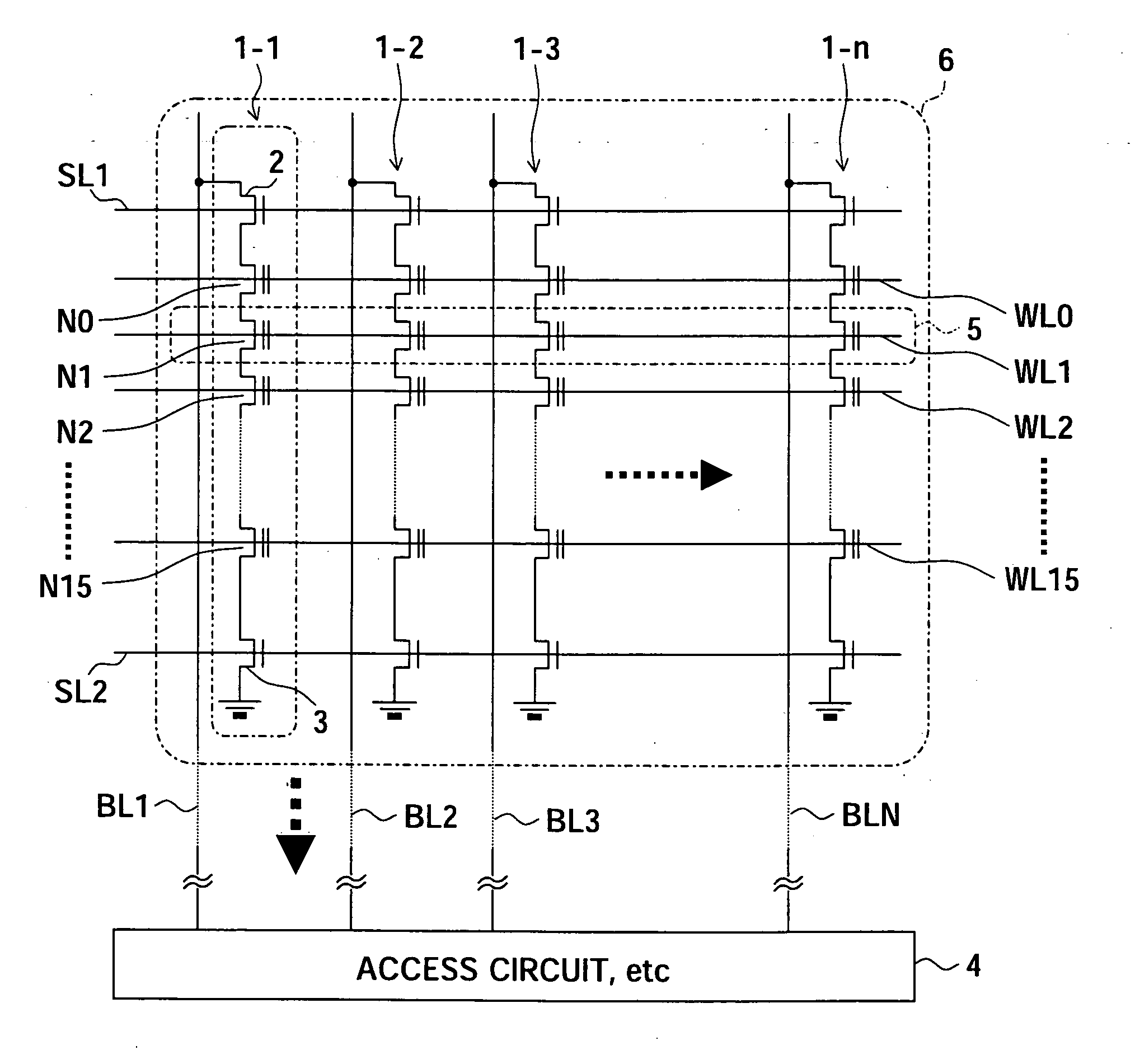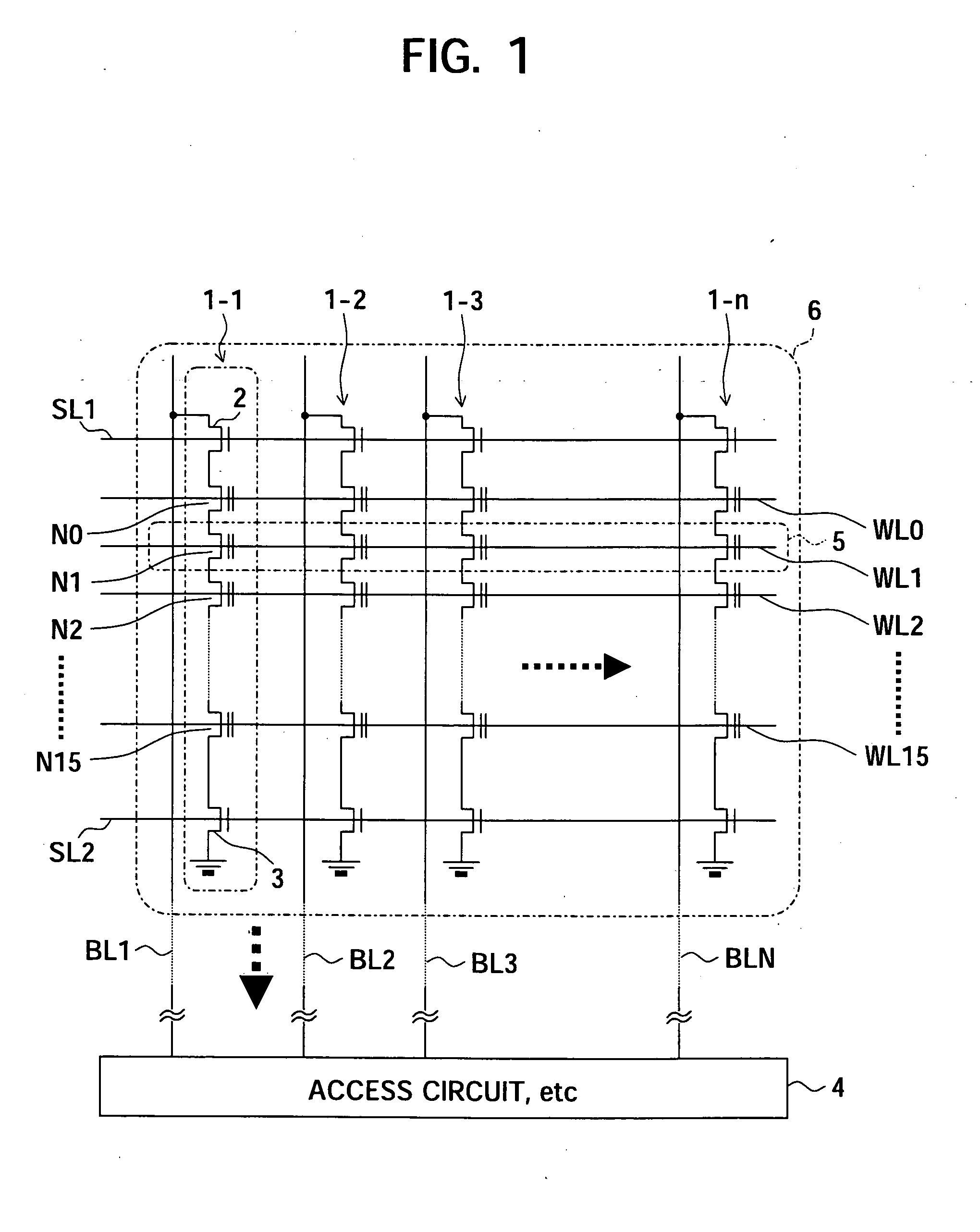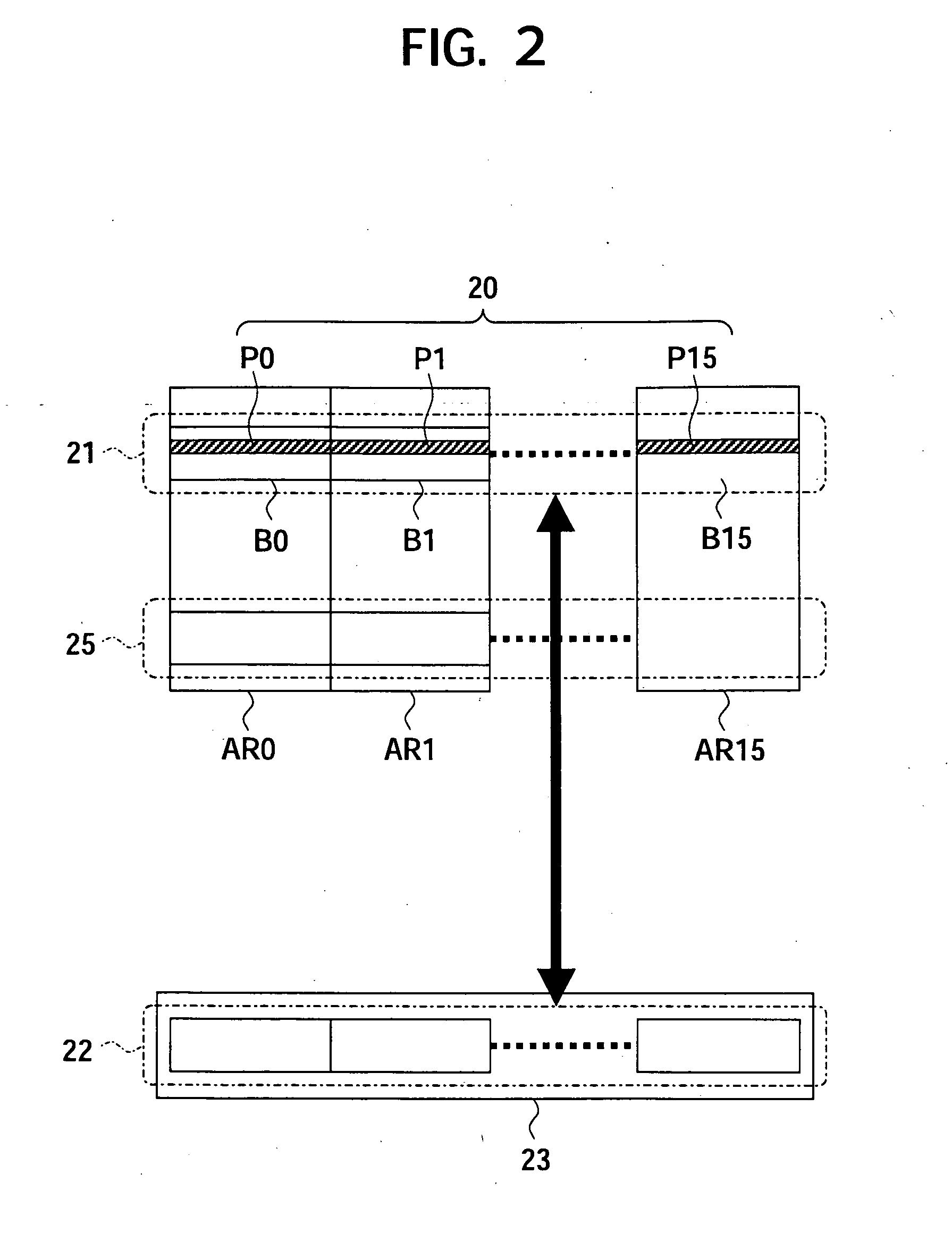Storage device
- Summary
- Abstract
- Description
- Claims
- Application Information
AI Technical Summary
Benefits of technology
Problems solved by technology
Method used
Image
Examples
first embodiment
[0066]FIG. 3 is a view of a configuration showing a storage device according to the present invention.
[0067] A storage device 30 of FIG. 3 has an interface circuit (I / F) 31, a page buffer 32, an internal data bus 33, a transfer control circuit 34, and NAND type flash memories 35 and 36 as principal components.
[0068] In the storage device 30, the 32-bit internal data bus 33 has two chips constituted by NAND type flash memories 35 and 36 having 16-bit input / outputs connected to it in parallel. The two NAND type flash memories 35 and 36 are simultaneously accessed in parallel in a read operation and a write operation. The page buffer 32 temporarily stores the accessed page data via the internal data bus 33 and is connected to the interface circuit 31 with the outside. The transfer control circuit 34 manages the transfer between the two flash memories 35 and 36 and the page buffer 32. The transfer control circuit 34 has a built-in RAM 37. The built-in RAM 37 has an address conversion t...
third embodiment
[0089] Such hierarchical arrangement of virtual addresses makes flexible management possible even for a parallel configuration of a plurality of chips or a plurality of banks. FIG. 8 shows a third embodiment using two chips configured in parallel.
[0090]FIG. 8 is a view of a configuration showing a storage device according to a third embodiment of the present invention. FIGS. 9A and 9B are diagrams showing an example of the configuration of the address conversion table in the transfer control circuit according to the third embodiment of the present invention.
[0091] In a storage device 30D according to the third embodiment, two chips of flash memories of the second embodiment are arranged in parallel. Physical address fields PBA0 and PBA1 in the erasure block unit address conversion table 51d are independently arranged for the chips of the flash memories 35d and 36d. Namely, in a RAM 50d built-in the transfer control circuit 34d, substantially two sets of erasure block unit address c...
second embodiment
[0106] An address conversion table 38h stored in a RAM 37c is the same as that of the present invention. Note that a RAM 50c stores a table 51h indicating the state of defects for each physical block address PBA and the state of usage of the blocks. The defect flag DEF indicates a defect in the target block. On the other hand, the usage flag USD becomes “0” after erasing the block and becomes “1” when data is written into even one portion. Further, a write pointer indicating the previously written page address is stored in a register 53h. The usual write operation is executed in a form of incrementing the pointer. Namely, in the same block, the data are sequentially written from the page address “0x00” toward “0xFF”.
[0107] In the present embodiment, when writing in a flash memory, the physical page address for the writing is determined from the table 51h and the register 53h. At this time, any defect block from which defect information is detected is skipped, whereby pages in the de...
PUM
 Login to View More
Login to View More Abstract
Description
Claims
Application Information
 Login to View More
Login to View More - R&D
- Intellectual Property
- Life Sciences
- Materials
- Tech Scout
- Unparalleled Data Quality
- Higher Quality Content
- 60% Fewer Hallucinations
Browse by: Latest US Patents, China's latest patents, Technical Efficacy Thesaurus, Application Domain, Technology Topic, Popular Technical Reports.
© 2025 PatSnap. All rights reserved.Legal|Privacy policy|Modern Slavery Act Transparency Statement|Sitemap|About US| Contact US: help@patsnap.com



